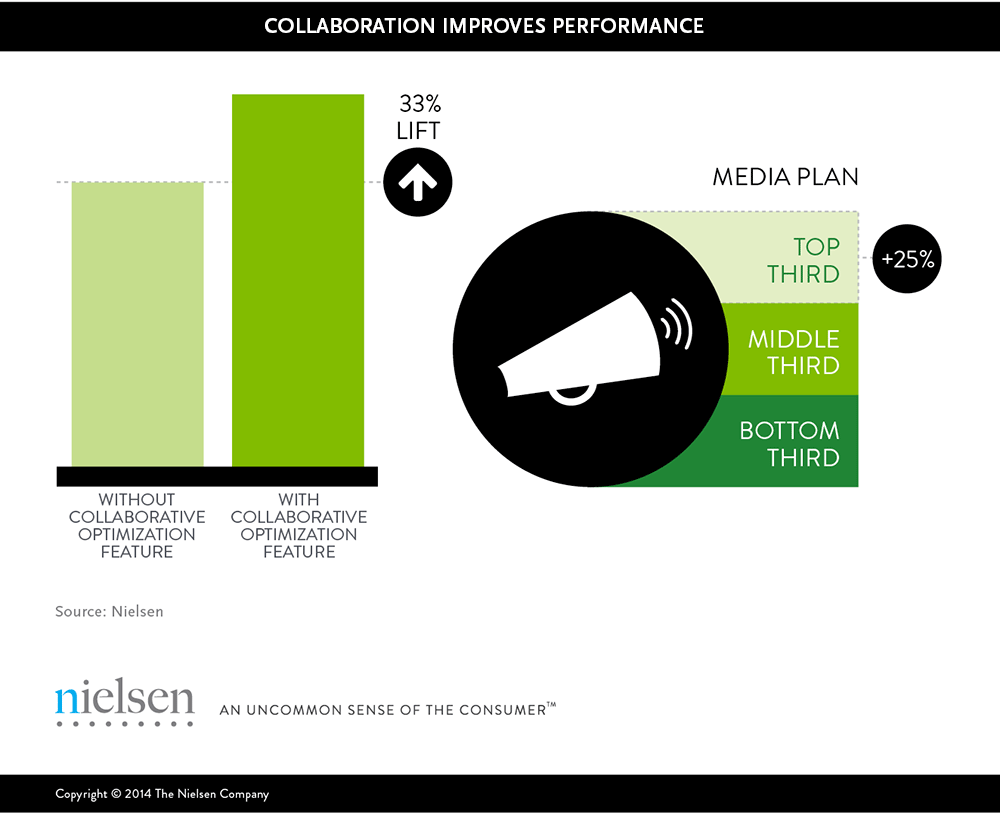With increasing fragmentation across the media landscape and a growing focus on programmatic media buying, marketers are hard pressed to uncover a winning formula for advertising success. While myriad factors are involved, two recent Nielsen studies highlight how finding the right partners—and working together—plays an important part in that success.
According to one of the new studies, conducted in conjunction with the CMO Council, 95% of marketers say they would increase their digital advertising budgets if they could verify that their brand advertising created the desired result, and 58% of marketers and agencies list in-flight optimization against metrics for success as an important expectation for their partners.

Underscoring the importance of collaboration to the success of ad campaigns in a digital environment, 59% of marketers also indicated that having everyone involved with the campaign be in agreement around what constitutes success is important to developing an effective measurement strategy for their digital brand advertising. Unfortunately, only 8% of publishers say this is happening for every campaign.
Media owners want to generate the best possible results for marketers, as this translates into repeat business and sales growth. This is challenging, however, when both parties aren’t working off of the same metrics or don’t have access to the same real-time brand lift data that advertisers are using to evaluate their ad performance.
“Digital has come a long way, but there is still room to grow,” says Dan Beltramo, EVP Marketing Effectiveness, Nielsen. “Getting everyone on the same page and speaking the same language will bring us one step closer to creating a ‘common currency of communication’ for digital brand advertising effectiveness.”
But this isn’t something to strive for, as this capability is already in play with Collaborative Optimization, a Nielsen Online Brand Effect and Nielsen Mobile Brand Effect feature that allows all parties involved in a campaign to look at the same data and directly collaborate in real-time to maximize campaign effectiveness. In a focused study of more than 150 Nielsen Online Brand Effect campaigns, the campaigns that look at the same data and directly collaborate in real-time generated, on average, 33% higher brand lift. We also found that campaigns using Collaborative Optimization were 25% more likely to perform in the top third of the campaign.
Results like these speak to the power of direct collaboration and its ability to affect advertising performance, which is why it’s critical for marketers to employ tools that ensure alignment across the entire media ecosystem.
Methodology
Nielsen Online Brand Effect and Nielsen Mobile Brand Effect Collaborative Optimization Study Methodology
The analysis included 150+ Nielsen Online Brand Effect campaigns that ran in 2014 and used the Collaborative Optimization feature. Publisher and platform brand lift performance and relative performance (top third, middle third, and bottom third) were aggregated across campaigns that used the Collaborative Optimization feature, and compared to performance on campaigns that did not use the Collaborative Optimization feature. Campaigns included in the analysis spanned a variety of demographics, categories, marketing objectives, languages, and creative units.
CMO Council Survey Methodology
This report summarizes the findings of a study by Nielsen and the CMO Council. It highlights the key findings from the 546 senior brand leaders, 661 agency executives and 377 publishing representatives that took part in an online survey fielded between April and July 2014.



